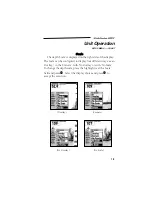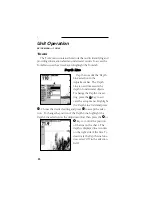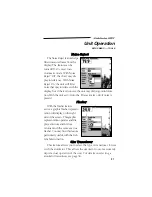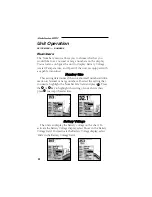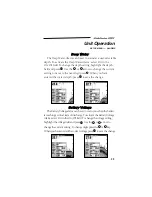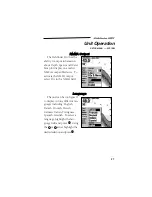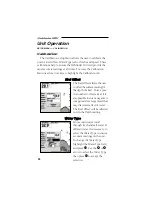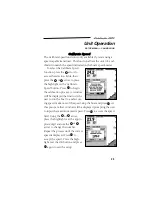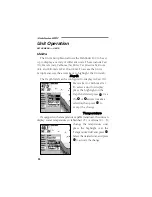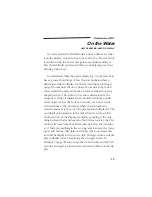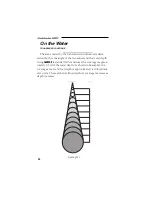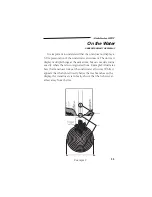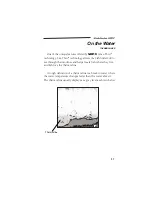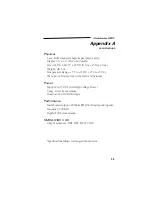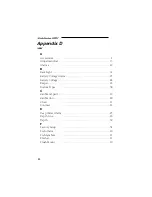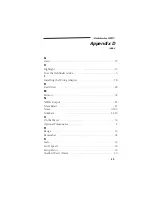
33
2
If you are familiar with fishfinders, and can determine what
is on the display, this section may not be for you. This section is
intended to help the novice user gain some understanding of
how the fishfinder operates and how it can help improve their
fishing productivity.
To understand what the unit is displaying, it is important to
have a general knowledge of how the unit works and how it
determines what to display. As briefly described at the begin-
ning of this manual, the unit operates by transmitting sound
waves toward the bottom of a lake, stream or seabed in a cone
shaped pattern. The width of the cone is determined by the
transducer. When a transmitted soundwave strikes an under-
water object such as the bottom, structure, or a fish, sound is
reflected back to the transducer where the information is
received and sent to the unit to be processed and displayed. The
unit displays information in the order that it is returned: first
returnedfirst on the display. Generally speaking, if the only
thing between the transducer and the bottom is water, the first
return will come from the bottom directly below the transduc-
er. If there is something in the coverage area between the trans-
ducer and bottom, that object will reflect the sound wave first
and will be displayed first on the unit. Stronger returns will dis-
play in darker colors, black being the strongest return. In
Example 2 (page 35) you can see that the branches and the fish
were the strongest returns and are indicated in black on the dis-
play.
On the Water
UNIT OPERATION AND THE DISPLAY

